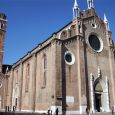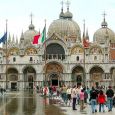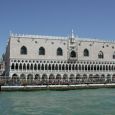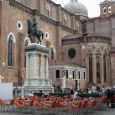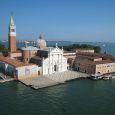Venice
Advertisement
By Air
Venice Marco Polo Airport is the chief air facility serving the city and it handles a large number of flights by many major international airlines. Major airlines operating from Venice include Alitalia (Italy’s national carrier), British Airways, Continental Airlines, Air Canada, Air New Zealand, American Airlines, Thai Airlines, Delta Air Lines, Northwest Airlines, Malaysia Air, Qantas, United Airlines and US Airways.
By Rail
Rail connections are available between a large number of Italian cities and some European cities, with Venice's station being the Stazione di Santa Lucia. Services from Verona, Bologna, Padua and Milan as well as from Switzerland and France operate regularly and provide speedy and efficient services. From Paris, the journey via Milan takes a total of 9 hours, 30 minutes. Services are also available from Slovenia, Croatia and Hungary and require a change at Trieste. It’s also possible to take the train all the way from London, although changes are required en-route.
By Car
Travelling from east or west of the city, the A4 motorway provides principle access to Venice, connecting Turin with Trieste and going via Milan and Mestre. From France, the Mont Blanc tunnel at Chamonix provides the main point of entry, while from Austria, it’s the Brenner Pass, and from Switzerland, the Grand St Bernard tunnel. Cars drive on the right hand side of the road in Italy and visitors are warned that parking in the city is astronomically expensive.
Advertisement
Academy of Fine Arts
The Galleria dell'Accademia, called "Accademia" for short, is on the Canal Grande near the Ponte dell'Accademia. It has the most important and comprehensive collection of 15th-18th century Venetian painting in existence.
The basis of the collection was the Accademia di Belle Arti founded in 1750 by the painter Giovanni Battista Piazzetta. Since 1807 it has been housed in the former Monastery of Santa Maria della Carità (15th century) and the adjacent monastery buildings of the Lateran Canons (ca. 1500).
Church, monastery and school were secularized about 1800. In 1802 private art-lovers set up a temporary depot in the empty rooms for works of art that had become "homeless" after the closure on monasteries and churches and the clearing of the palaces of noble families. In a very short time a unique gallery was assembled in this way, and was steadily enlarged by purchases and donations.
Santa Maria Gloriosa dei Frari
This Gothic church was begun by the Franciscans ("Frari" in Venetian = "Frati" in Italian) about 1340. The facade, interior, annexs, Cappella Emiliana and Cappella Cornaro were added in the middle of the 15th century. The simple unadorned interior corresponds to the ideals of the Franciscan monks. The impressive Campanile (14th century) is the second highest in the city.
Basilica of St Mark
The Basilica of St Mark in Venice was the spiritual center of the Republic; a splendid building for the Patron Saint of the Republic, the church of the Doge and State.
Originally the palace chapel of the Doge, it became important in 829 when the remains of St Mark were transferred to Venice from Alexandria and interred in the Cappella di San Marco, which 150 years later in 976, was destroyed by fire but soon rebuilt. Its present ground-plan, which is derived from the Church of the Apostles at Constantinople, dates from 1063 and consists of a Greek cross, covered by five domes, with two side-aisles on the west arm pointing towards the Piazza di San Marco. In 1094 the basilica was consecrated in the presence of the Emperor Henry IV and was raised to the status of official state church.
Doges Palace
The Doges' Palace in Venice was the center of government of the Republic and the residence of the Doge. Apparently a square building, it actually consists of only three wings: the wing along the Rio Palazzo, the main facade on the Molo (71m/233ft) and the west façade (75m/246ft) overlooking the Piazzetta. The fourth wing is formed by the Basilica di San Marco (Basilica of St Mark) which the palace has adjoined since 1438.
The first palace of the Doges, a wretched gloomy wooden fortress with massive defensive towers, was built in 814. It was surrounded by the lagoon on the south side and by canals on the other sides. The castle was entered by a drawbridge on the north side After frequent destruction by fire and subsequent rebuilding, the castle was converted in the 12th century into a palace in the Byzantine style. Fragments of the foundations are all that remain of these early Palazzi.
San Giorgio Maggiore Island
The American Henry James once wrote of the island that it has "a success beyond all reason". The island owes its beauty mainly to its position and to the genius of the Venetian architects. The first church was built in 790, and two hundred years later the Benedictine monastery was added. Both buildings were destroyed by an earthquake. The monastery was rebuilt and in the 16th century. San Giorgio Maggiore was built on the site of the old church. After the Second World War the buildings on the island became increasingly dilapidated until finally the Italian industrialist Vittorio Cini established the Giorgio Cini Foundation in memory of his son Giorgio. This foundation financed restoration of the dilapidated and decaying buildings and built an International Center of Art and Culture with 30 auditoria, a cinema, an open-air theater and a naval college.
Colleoni Monument
The monument to Colleoni is a brilliant piece of work from the Venetian Renaissance. The model was made by Andrea Verocchil (1481-88) but it was cast in bronze by Alessandro Leopardi in 1496. The splendor of the plinth, with its marble reliefs, is taken up by the vigor of the equestrian figure, so that one balances the other in complete harmony. The figure itself bears no resemblance to the real Bartolomeo Colleoni (1400-75) but is an evocation of what the "condottier" should ideally look like - proud and conscious of his power.
Colleoni had commanded the land forces of the Republic, thus managing to amass a huge fortune. On his deathbed he bequeathed all his possessions to the State on the condition that a monument to his memory be erected "in front of San Marco". As the State, which hitherto had never authorized a public memorial, did not want to lose the money, instructions were given for the monument to be erected in front of the Scuolo Grande di San Marco, the confraternity house of San Marco, which stands next to the Church of Santi Giov anni e Paolo, since the dying man had failed to specify that his monument must be in front of the "Church" of San Marco!
Information not available
July - August -> 28(°C) - Summer
January - February -> 1(°C) - Winter
Advertisement

